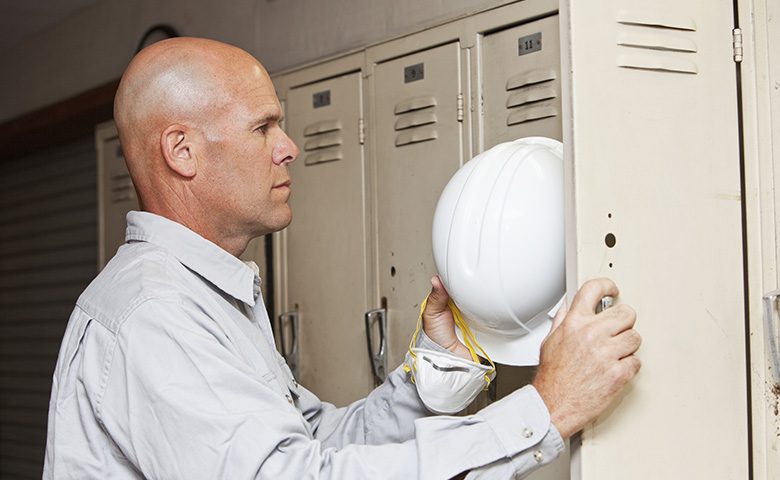When companies purchase PPE, factors like effectiveness, cost and convenience of procurement tend to dominate the decision-making process. But there’s a lot more that goes into determining whether employees actually use the protective equipment, whether it’s a basic high-visibility vest or a more intricate fall-arrest harness. Here are five of the most commonly overlooked elements that affect the rates of PPE use among workers.
PPE comfort and aesthetics
Personal comfort and appearance is rarely considered as a serious factor when purchasing PPE. But what initially may seem like a frivolous attribute can actually be a major contributor to PPE compliance among staff members. This is particularly true with lower-cost, everyday pieces of PPE such as masks, gloves, eye protection and footwear. If staff are issued uncomfortable, bulky PPE compliance is much more likely to suffer. And if employees feel like they have no agency in what they’re wearing, they may be more likely to perceive PPE as fitting or performing poorly. Allow some flexibility and choice when it comes to PPE, and take look and fit seriously when sourcing PPE, and you’ll likely see compliance and worker satisfaction rates climb. This is an easy way to show your staff that their well-being is a priority.
Fit
To ensure PPE is being worn, you should include a fitting process in your company PPE program. Ideally, managers or supervisors are encouraged to schedule a fitting for each individual worker as part of a PPE training session, during which they can explain the utility of each piece of equipment, as well as how to wear and best maintain all required PPE. Similar to the effect of providing choice of PPE to staff, fitting each individual worker sends the message that management takes the health, safety and wellness of workers seriously. The importance of a good fit cannot be understated for its impact on PPE use.
Of course, PPE compliance is only part of the issue. It’s also worth noting that a worker can be compromised and exposed to hazards if PPE is worn with anything less than a perfect fit. Evaluate whether or not you are able to guarantee proper-fitting PPE for your staff, as certain specialized pieces of PPE may require bringing in qualified personnel to sign off on the fitting.
Cost considerations
The cost of PPE can often be viewed as a burden on the company, a line in the ledger that eats into safety budgets. Providing PPE to all employees can certainly be a significant expense and it is common for companies to source the cheapest available equipment to soften the blow to the bottom line. But while cost-effective strategies are obviously important, sometimes the least expensive option in the moment can cost the company more over the long run.
When procuring PPE for your company, always evaluate the equipment over a significant time frame. A more durable product may cost more, but it will last longer and will not need replacing as often. It will also signal to employees that you’re serious about upholding the company’s end of the bargain by providing quality PPE. Think of PPE as an investment in the success and health of your company, and you can avoid the pitfalls that may come with short-term cost savings.
Inspection and maintenance
PPE can become compromised with heavy use, improper storage, or lack of maintenance, which can reduce the protection it offers. Workers unaware their PPE is not working effectively may also expose themselves to hazards and increase the risk of an injury. This is especially important for high-risk activities like working at heights, though it’s applicable for all tasks that require the use of PPE. To keep your PPE in good condition and providing the proper protection to your workers, develop and implement a comprehensive PPE maintenance program that includes regular inspections.
Set aside ample time for these inspections so that you can carefully evaluate each piece of equipment to identify any potential damage or malfunction. You should also train and empower workers to inspect their PPE for common deficiencies before use. The more eyes looking for damaged PPE the better. Develop easily accessible and understood procedures for staff to replace their PPE, or parts of their PPE, quickly. A worker should never be on the job, exposing themselves to hazards, wearing defective PPE.
Human factors training
We’ve already seen how several factors contribute to the use and effectiveness of PPE. But perhaps the most influential issue is human factors. It’s a simple fact that workers are less likely to put on a hard hat or safety glasses if they’re tired, rushing, or are affected by any number of other mental or physical states.
If you’re taking steps to address fit, comfort and quality, and to inspect PPE for wear and tear, then you should also help workers learn to deal with the human factors that will frequently affect whether they’ll use protective equipment in the first place. The best way to do this is to offer proper human factors training that will run through the ins and outs of how human factors work and what workers can do to recognize and respond to them in real time. The effects aren’t confined to PPE, as it will have an impact on your entire safety program, but for the topic at hand, it’s important to note that there’s typically a notable uptick in the use of PPE following training on human factors. And if you want to learn more about the relationship between human factors and PPE compliance, consult this guide on how state of mind can affect protection offered by PPE.

